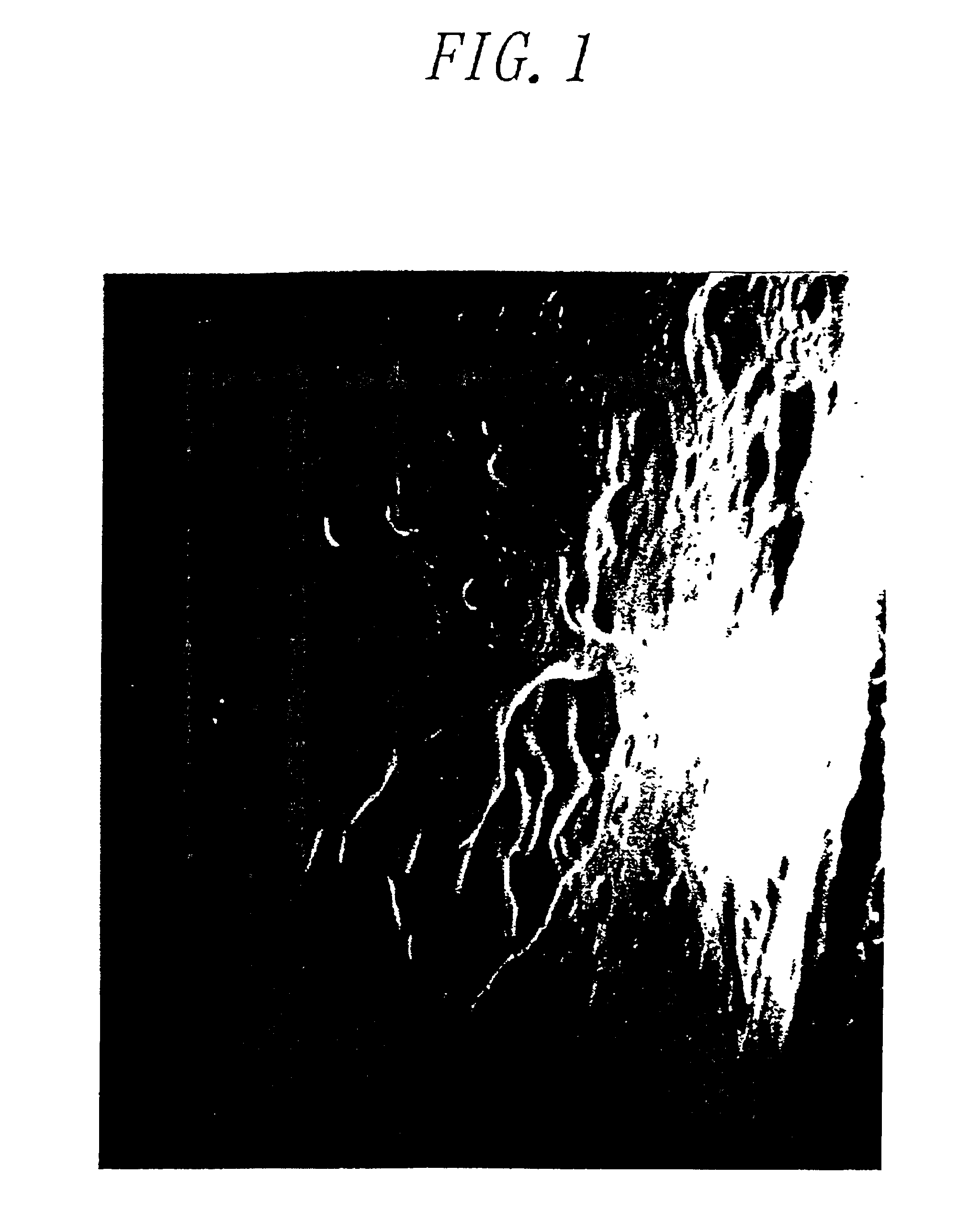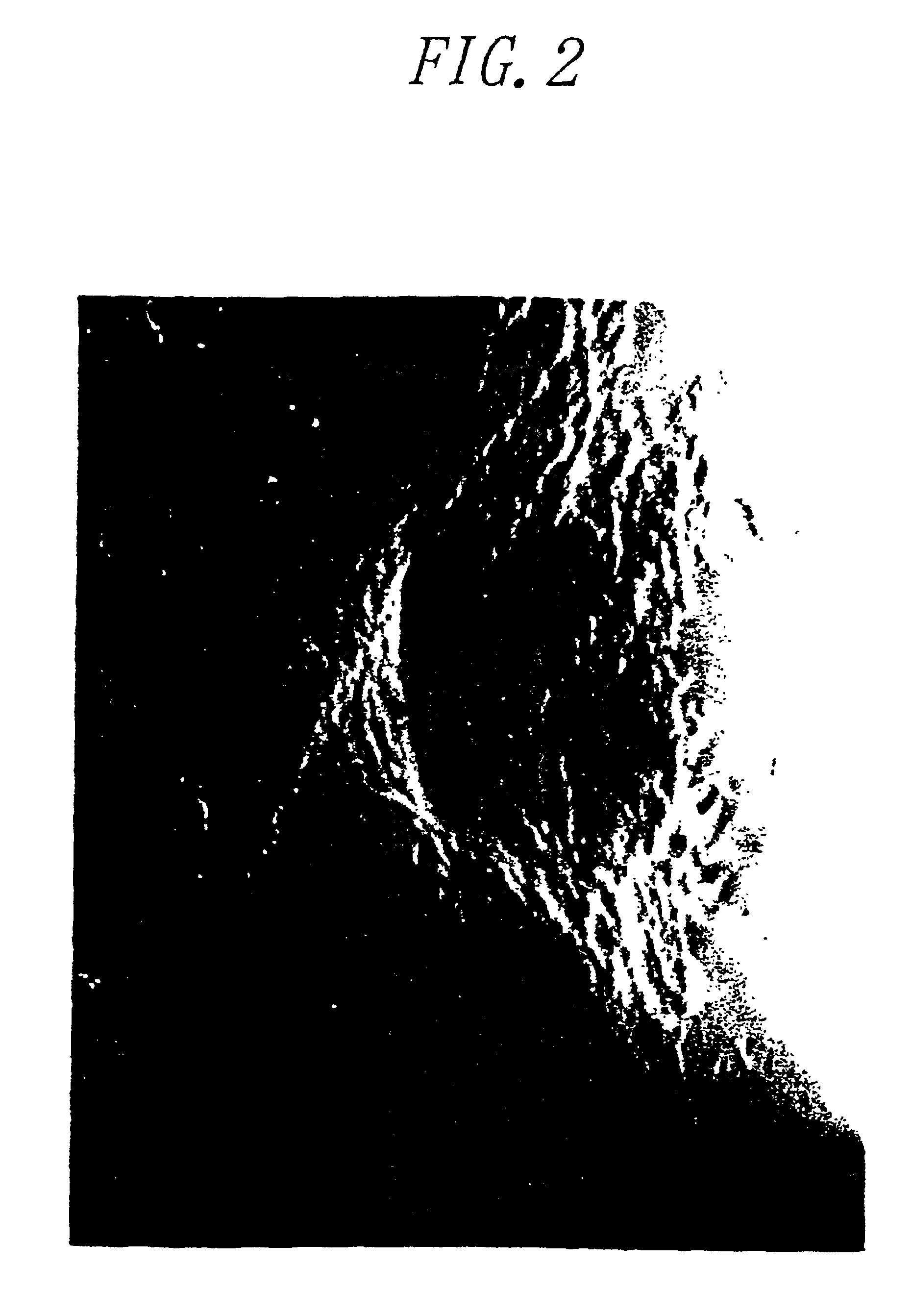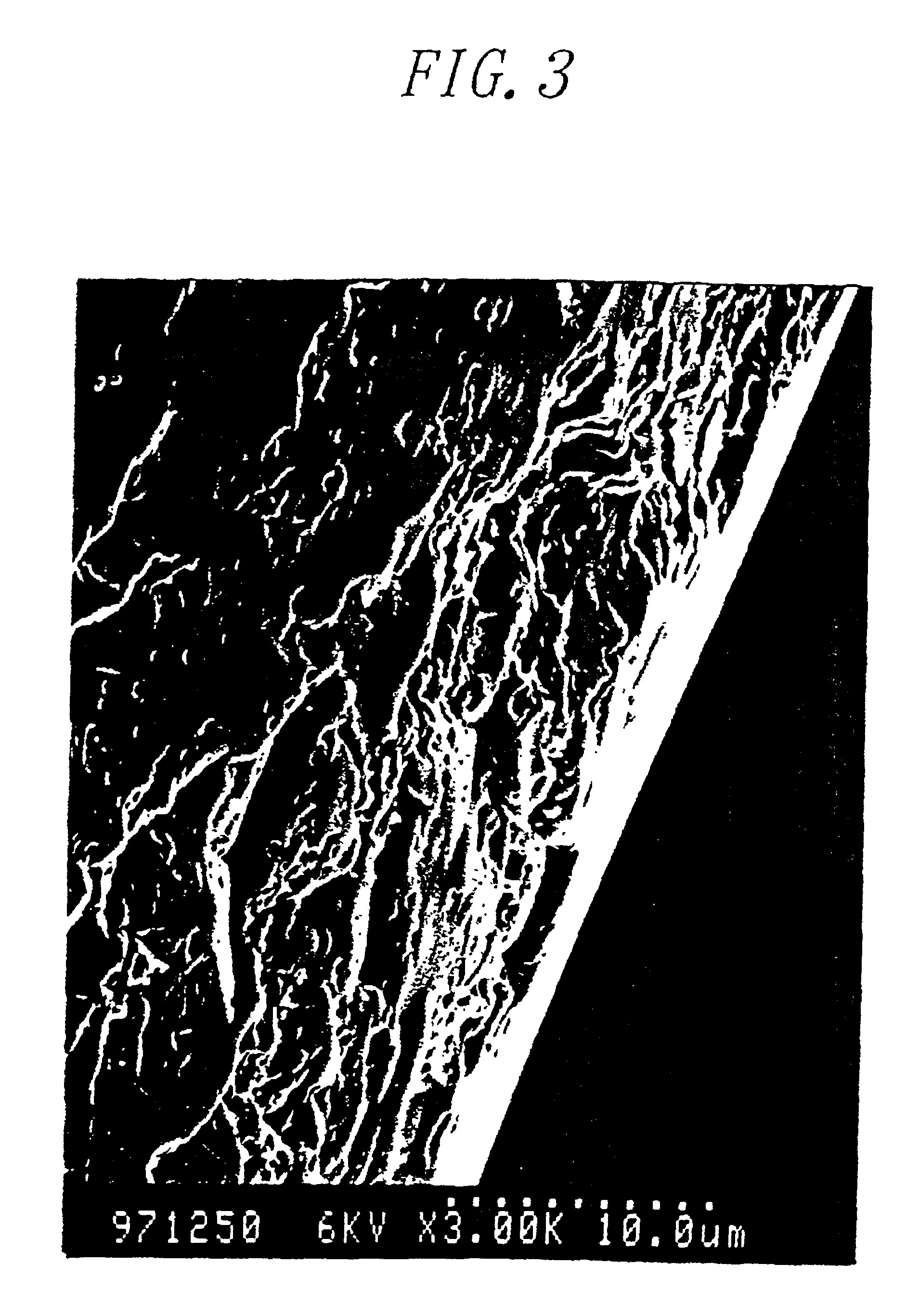Method for decomposing polyesters containing aromatic moieties, a denier reduction method of fiber, and microorganisms having activity of decomposing the polyester
a polyester and aromatic moiete technology, applied in the field of decomposing polyesters containing aromatic moieties, can solve the problems of being susceptible to decomposition by microorganisms, and achieve the effect of substantially reducing the negative effect on the environmen
- Summary
- Abstract
- Description
- Claims
- Application Information
AI Technical Summary
Benefits of technology
Problems solved by technology
Method used
Image
Examples
Embodiment Construction
(Screening of Microorganisms Capable of Decomposing a Polyester Containing an Aromatic Moiety)
The inventors found a method of cultivation for screening a microorganism capable of decomposing a polyester containing aromatic moieties, such as polyethylene terephthalate. Polyethylene terephthalate is insoluble in water and usually has a crystalline structure. The inventor therefore added fibers, made of an amorphous or non-crystalline polyethylene terephthalate, in a medium having the following composition. Fibers were used for facilitating the judgement on whether the decomposition took place or not, in other words, the screening of a microorganism capable of decomposing the polyester. Moreover, a medium containing polyesters having aromatic moieties as a sole carbon source was used for enrichment culture.
Used Mediumyeast extract 0.1%ammonium sulfate 0.2%salt mixtureFeSO4.7H2O0.001%CuSO4.5H2O0.0001% ZnSO4.7H2O0.0001% MgSO4.7H2O0.0001%
The used medium had unadjusted pH. 7 ml of the med...
PUM
| Property | Measurement | Unit |
|---|---|---|
| length | aaaaa | aaaaa |
| diameter | aaaaa | aaaaa |
| weight | aaaaa | aaaaa |
Abstract
Description
Claims
Application Information
 Login to View More
Login to View More - R&D
- Intellectual Property
- Life Sciences
- Materials
- Tech Scout
- Unparalleled Data Quality
- Higher Quality Content
- 60% Fewer Hallucinations
Browse by: Latest US Patents, China's latest patents, Technical Efficacy Thesaurus, Application Domain, Technology Topic, Popular Technical Reports.
© 2025 PatSnap. All rights reserved.Legal|Privacy policy|Modern Slavery Act Transparency Statement|Sitemap|About US| Contact US: help@patsnap.com



